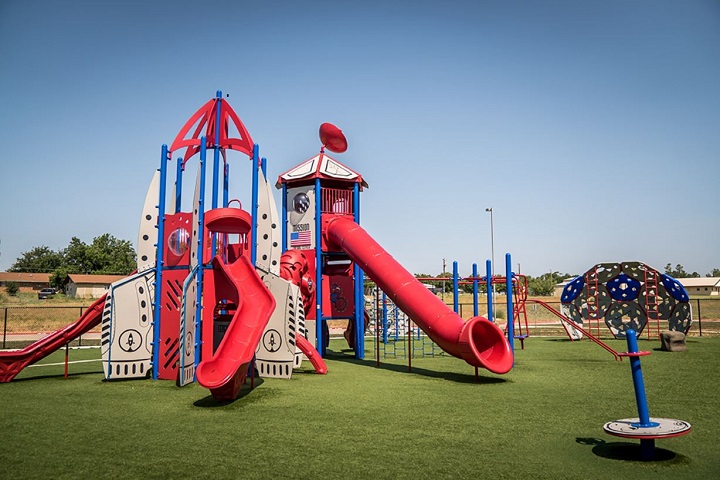What Are the Most Popular Features to Include in Outdoor Playgrounds?

Outdoor playgrounds provide children with the perfect environment to explore, interact, and develop essential physical and social skills. The best playgrounds combine fun, safety, and creativity, offering a variety of structures that cater to different age groups and activity levels. From climbing walls to interactive sensory panels, choosing the right features ensures an engaging and well-rounded play experience.
For high-quality and thoughtfully designed playgrounds, Inspire Play outdoor playgrounds offers a range of equipment that encourages active play, learning, and social interaction. Here’s a look at some of the most popular features that make outdoor playgrounds exciting and beneficial for children.
1. Climbing Structures for Strength and Coordination
Climbing elements help children develop motor skills, balance, and confidence while keeping them engaged in active play. These structures challenge kids both physically and mentally, making them a must-have for any playground.
Popular Climbing Features:
- Rock climbing walls – Improve grip strength and problem-solving skills.
- Rope climbing nets – Encourage coordination and teamwork.
- Dome climbers – Provide multi-directional climbing for group play.
Including a variety of climbing structures ensures that children of different ages and skill levels can safely enjoy the challenge.
2. Swings for Sensory and Social Development
Swings are a timeless playground favorite that provide both physical benefits and relaxation. The motion of swinging helps children develop balance, coordination, and core strength, while also offering a calming effect.
Types of Swings to Include:
- Traditional belt swings – Allow for solo or group play.
- Tire swings – Encourage cooperative play and social interaction.
- Adaptive swings – Provide safe play options for children with special needs.
A playground with multiple swing types ensures that all children can enjoy the sensation of flying through the air.
3. Slides for Excitement and Motor Skill Development
Slides add an element of adventure to any playground, offering thrills while improving balance and coordination. Climbing up the ladder and sliding down helps children develop confidence and independence.
Popular Slide Designs:
- Straight slides – Ideal for younger children due to their gentle slopes.
- Spiral and tube slides – Add extra excitement and movement challenges.
- Double or triple slides – Encourage friendly races and cooperative play.
Slides are a fundamental feature in any well-designed playground, promoting safe risk-taking and active movement.
4. Sensory and Interactive Play Panels for Learning
Playgrounds should also stimulate cognitive and sensory development, offering children ways to explore textures, sounds, and problem-solving activities.
Great Interactive Features:
- Musical play panels – Introduce rhythm and coordination.
- Maze or puzzle panels – Encourage critical thinking.
- Water and sand play stations – Provide tactile sensory experiences.
These elements enhance creativity and intellectual engagement, making playtime both fun and educational.
5. Balance Beams and Stepping Stones for Coordination
Balance-related features challenge children’s stability and motor skills, helping them develop better posture, focus, and agility.
Best Balance Play Elements:
- Wobble bridges – Add excitement with shifting movement.
- Stepping stones – Improve agility while promoting imaginative play.
- Curved or straight balance beams – Test coordination and endurance.
These features keep kids engaged while improving their core strength and body control.
6. Inclusive Play Equipment for All Abilities
Modern playgrounds are designed to be accessible to all children, ensuring that everyone can participate in active play.
Key Inclusive Features:
- Ramps and wide walkways – Allow wheelchair accessibility.
- Sensory play elements – Engage children with different sensory needs.
- Adaptive swings and seated spinners – Provide safe play options for children with mobility challenges.
By incorporating inclusive features, playgrounds promote social integration and equal play opportunities.
7. Shaded Areas and Seating for Comfort
A well-rounded playground should also include spaces where children and caregivers can rest and socialize.
Essential Comfort Features:
- Shade structures – Protect from sun exposure.
- Benches and seating areas – Allow parents to supervise comfortably.
- Picnic tables – Encourage family-friendly outdoor gatherings.
These additions create a welcoming and relaxing environment for families.
Final Thoughts
An engaging playground should include a mix of climbing, sliding, swinging, balancing, and interactive elements, catering to children’s physical, cognitive, and social development. Thoughtfully designed playgrounds inspire creativity, teamwork, and active fun, making them essential for schools, parks, and community spaces.

